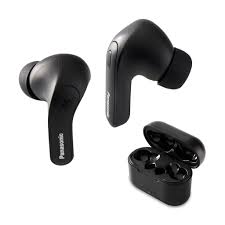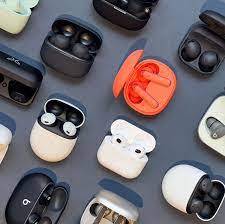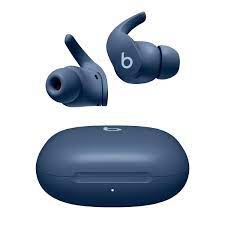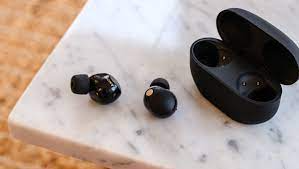Introduction
Wireless earbuds have revolutionized the way we enjoy music and interact with our devices, but occasional connectivity issues can be frustratingly disruptive. If you’ve ever found yourself asking “Why do my wireless earbuds keep cutting out?”, you’re not alone. This comprehensive guide will delve into the common causes behind intermittent audio dropouts and provide actionable steps to troubleshoot and resolve these issues. From Bluetooth range limitations to hardware problems, we’ll explore every possible angle so you can enjoy seamless, uninterrupted listening experiences.
1. Bluetooth Signal Strength and Range
Bluetooth is a wireless technology that operates in the 2.4 GHz ISM (Industrial, Scientific, and Medical) radio frequency band to enable short-range communication between devices. The signal strength and range of Bluetooth are crucial factors that determine its usability.
Signal Strength
The power output of a Bluetooth device is typically limited to around 100 milliwatts (mW), which corresponds to 20 dBm (decibels relative to one milliwatt). However, the actual received signal strength (RSSI) can vary due to transmission losses, interference from other devices using the same frequency band, and the sensitivity of the receiving device’s antenna. A stronger signal generally means better connectivity and data transfer reliability.
Range
The standard range for Bluetooth Classic (BR/EDR) is usually up to 10 meters (33 feet) in optimal conditions, but this can be shorter in environments with obstacles like walls or in areas with high RF interference. Bluetooth Low Energy (BLE), also known as Bluetooth Smart, has a similar nominal range but is designed for lower power consumption and is often used in applications where devices need to communicate over longer periods without recharging.
Factors Affecting Range and Strength
- Transmission Power: The higher the transmit power, the greater the range.
- Receiver Sensitivity: More sensitive receivers can pick up weaker signals.
- Obstacles: Walls, doors, and other solid objects weaken the signal.
- Interference: Other wireless devices operating on the 2.4 GHz band can cause interference.
- Antenna Quality: Better antennas can improve both transmit and receive capabilities.
- Frequency Bandwidth: BLE uses different advertising channels to mitigate interference, increasing the likelihood of successful connections.
Advanced Bluetooth versions (like Bluetooth 5 and later) have extended the range to up to 200 meters in line-of-sight situations and improved data transfer rates, enhancing overall performance while maintaining low power usage.
2. Battery Life and Power Management
Battery life and power management are critical aspects of any portable electronic device, especially those that utilize wireless technologies like Bluetooth. The efficiency of power consumption directly impacts the operational time between charges.
Bluetooth Power Consumption
- Standby vs. Active Mode: Bluetooth devices consume minimal power in standby mode to maintain a connection or listen for incoming pairing requests. In active data transfer mode, power consumption increases due to the transmission and reception processes.
- Bluetooth Low Energy (BLE): Designed for low-power applications, BLE significantly reduces power usage compared to Classic Bluetooth. It’s ideal for IoT devices and wearables that need to run for months on a small battery, such as fitness trackers and smartwatches.
Power Management Strategies
- Low-Power Modes: Devices can enter sleep modes when not actively transmitting or receiving data. They wake up periodically or based on specific triggers to check for messages, conserving energy.
- Connection Intervals: BLE allows for adjustable connection intervals, where devices communicate at set intervals rather than continuously. Longer intervals mean less frequent communication and thus lower power consumption.
- Transmit Power Control: Lowering the transmit power can reduce the range but also decrease power use, which is useful if a close-range connection suffices.
- Optimized Data Transfers: Minimizing unnecessary data packets and using efficient data compression algorithms can save energy.
- Hardware and Firmware Optimization: Advanced hardware components and optimized firmware designs help minimize quiescent current and maximize the efficiency of active states.
- Battery Selection and Capacity: Choosing batteries with high energy density and matching them to the expected usage pattern can significantly extend overall battery life.
- User Awareness: Some devices provide users with control over connectivity options, allowing them to manually turn off Bluetooth when not needed.
Effective power management is essential for ensuring a satisfactory user experience by balancing functionality, performance, and battery longevity.
3. Firmware and Software Updates
Outdated firmware or software can sometimes cause compatibility and connectivity problems. Many manufacturers release updates to improve Bluetooth performance and fix bugs. Check your wireless earbuds manufacturer’s app or website for available updates and follow the instructions carefully to install them. Make sure your host device’s operating system is also up-to-date, as outdated OS versions can interfere with Bluetooth functionality.
4. Pairing and Connection Stability
Incorrect or unstable pairing can lead to frequent disconnections. Re-pairing your earbuds can often solve this problem. To do this, forget the earbuds from your device’s Bluetooth settings, restart both the earbuds and the device, and then re-establish the connection. Also, some earbuds require resetting to default settings to correct persistent pairing issues. Consult your user manual for specific reset procedures.
5. Hardware Malfunctions
Physical damage or defects in the earbuds themselves could result in connectivity troubles. Broken antennas, damaged charging contacts, or worn-out components can all impact Bluetooth performance. Inspect your earbuds for signs of wear or damage, especially around the charging ports and antenna areas. If you suspect hardware failure, reach out to the manufacturer for warranty support or repair services.
6. Compatibility and Interference
Compatibility issues between your earbuds and your device could also contribute to dropouts. Not all earbuds work seamlessly with every smartphone or tablet model, especially if they run older versions of Bluetooth. Moreover, radio frequency interference from other devices or environmental factors can disrupt the signal. Try switching off potential sources of interference and test different environments to see if the issue persists.
7. Maintenance and Care
Proper maintenance and care of your wireless earbuds can prevent many future issues. Regularly clean the earbuds and charging case to remove dust and debris which might obstruct connections. Be cautious not to expose your earbuds to extreme temperatures or humidity, as this can damage internal components over time. Lastly, always use original or recommended chargers to prolong battery life and prevent charging-related issues that might lead to connectivity problems.
Conclusion
Addressing wireless earbud connectivity issues requires a systematic approach, starting from the basics of signal strength and battery life to more complex considerations like software updates and hardware checks. By understanding and addressing each potential cause, you should be able to restore reliable performance and minimize frustrating cutouts. Remember, persistence is key – if one solution doesn’t work, move onto the next until you find the root cause. And when all else fails, professional help from the manufacturer’s customer service team can be invaluable.